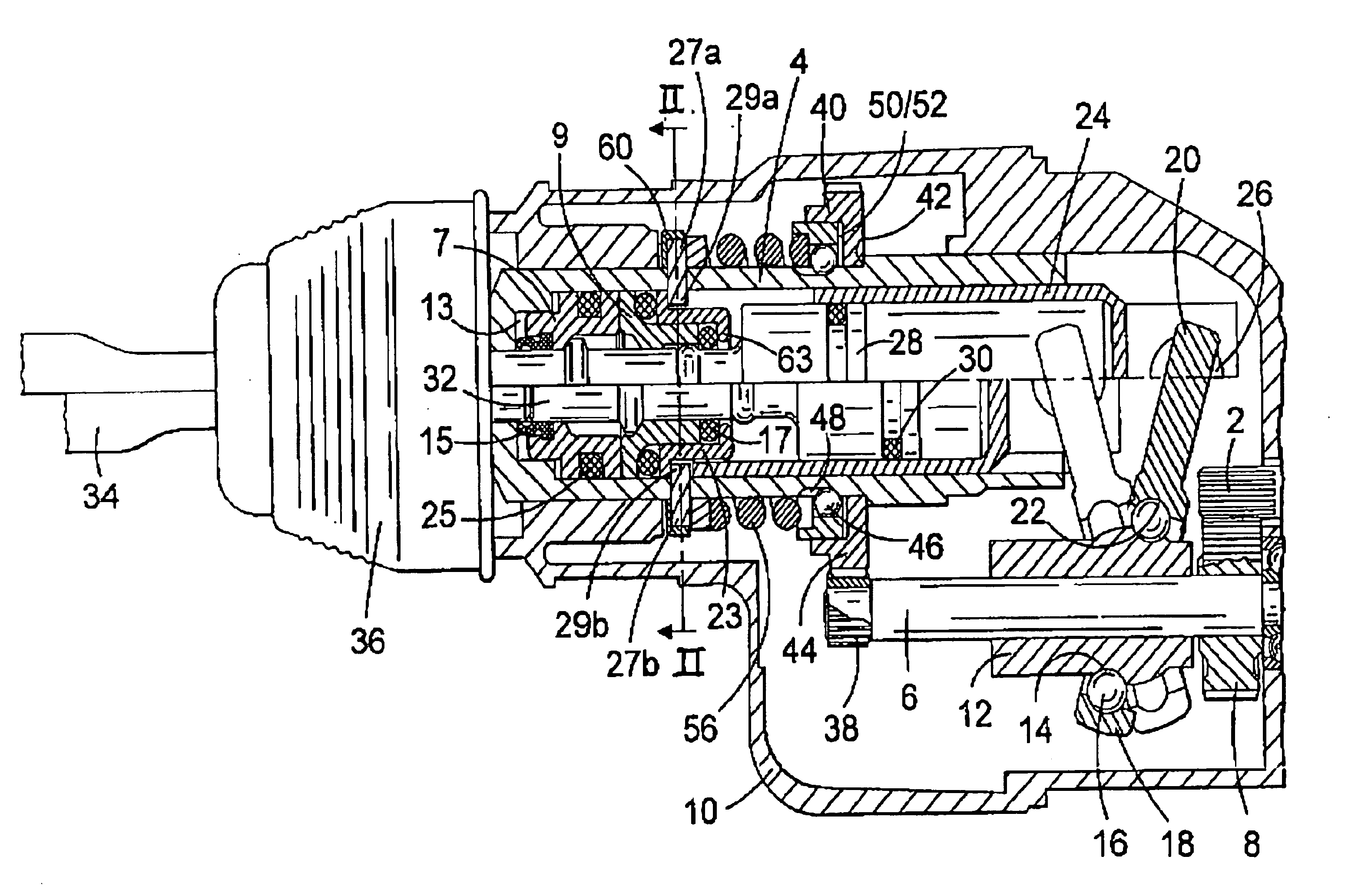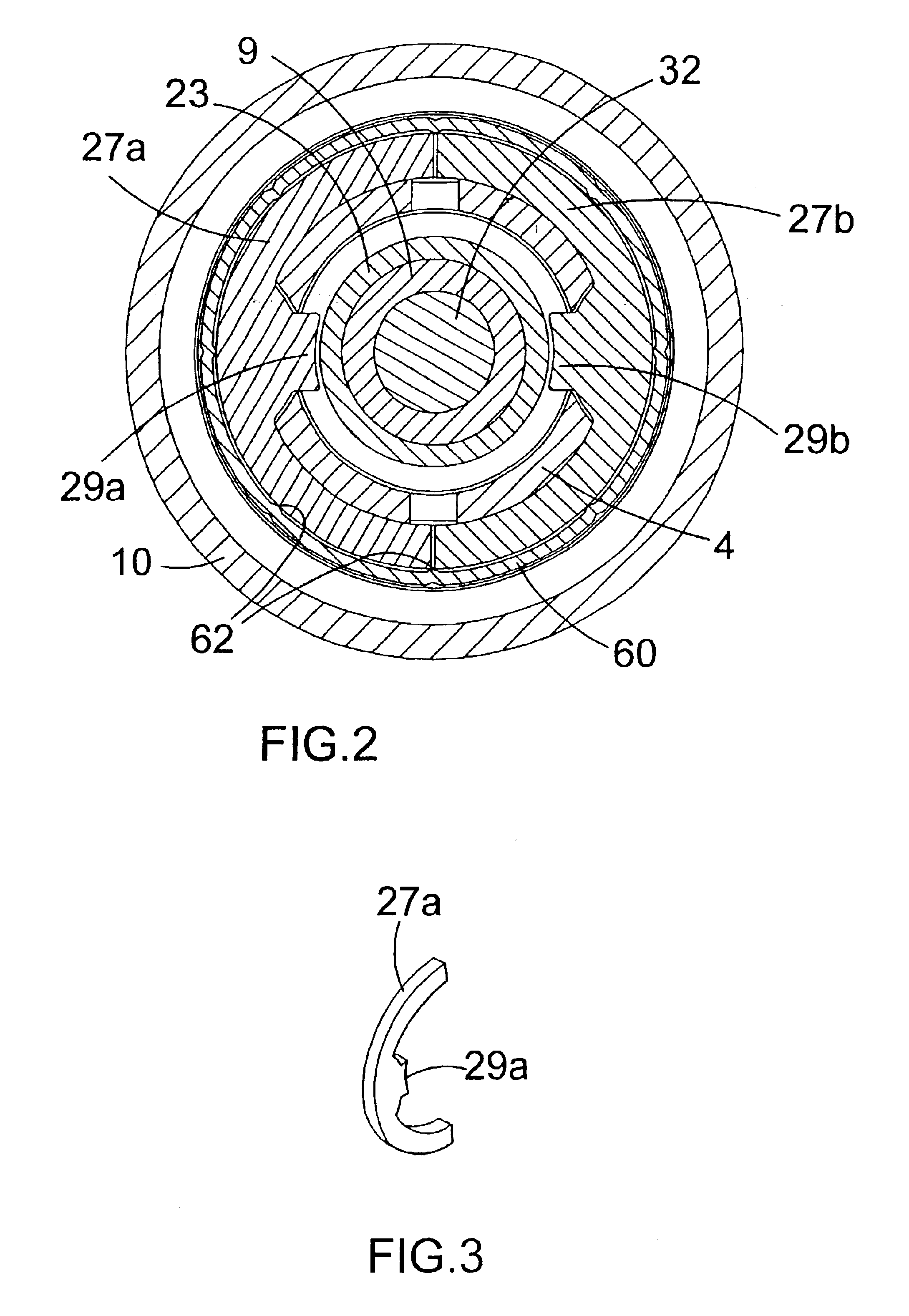Hammer
a technology of electric hammer and hammer head, which is applied in the direction of manufacturing tools, percussive tools, portable drilling machines, etc., can solve the problems of difficult or impossible assembly of components within the increased internal diameter portion of the spindle, inability to provide axial stops against rearward movement within the spindle, and difficulty in correctly assembling into the hammer spindle. , to achieve the effect of reducing the number of components
- Summary
- Abstract
- Description
- Claims
- Application Information
AI Technical Summary
Benefits of technology
Problems solved by technology
Method used
Image
Examples
Embodiment Construction
[0032]The rotary hammer has a forward portion which is shown in FIG. 1 and a rearward portion incorporating a motor and a rear handle, in the conventional way. The handle may be of the pistol grip or D-handle type. The handle portion incorporates a trigger switch for actuating the electric motor, which motor is formed at the forward end of its armature shaft with a pinion (2). The pinion (2) of the motor rotatingly drives an intermediate shaft (6) via a gear (8) which gear is press fit onto the rearward end of the intermediate shaft (6). The intermediate shaft is rotatingly mounted in a forward housing part (10) of the hammer in a conventional manner. In the FIG. 1 arrangement the longitudinal axis of the motor is parallel with the longitudinal axis of the hollow cylindrical spindle (4) of the hammer. Alternatively, the motor could be aligned with its axis perpendicular to the axis of the spindle (4), in which case a bevel pinion would be formed at the end of the armature shaft of t...
PUM
| Property | Measurement | Unit |
|---|---|---|
| Resilience | aaaaa | aaaaa |
Abstract
Description
Claims
Application Information
 Login to View More
Login to View More - R&D
- Intellectual Property
- Life Sciences
- Materials
- Tech Scout
- Unparalleled Data Quality
- Higher Quality Content
- 60% Fewer Hallucinations
Browse by: Latest US Patents, China's latest patents, Technical Efficacy Thesaurus, Application Domain, Technology Topic, Popular Technical Reports.
© 2025 PatSnap. All rights reserved.Legal|Privacy policy|Modern Slavery Act Transparency Statement|Sitemap|About US| Contact US: help@patsnap.com



